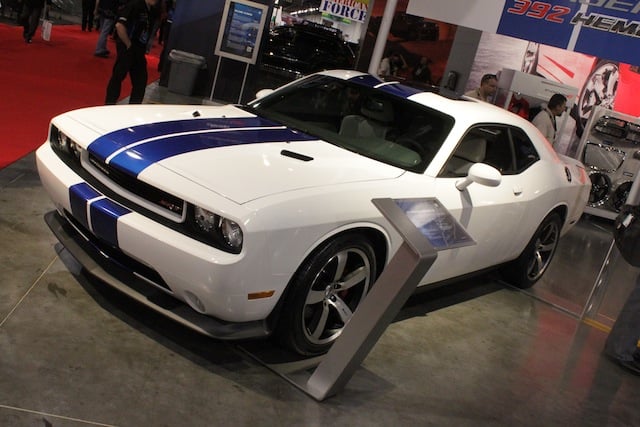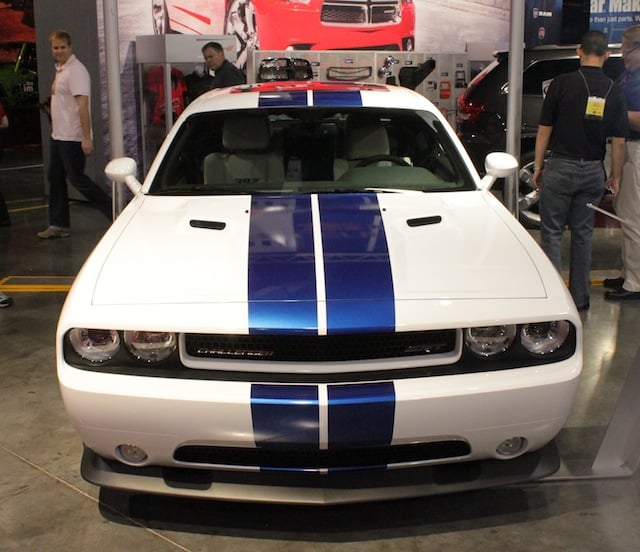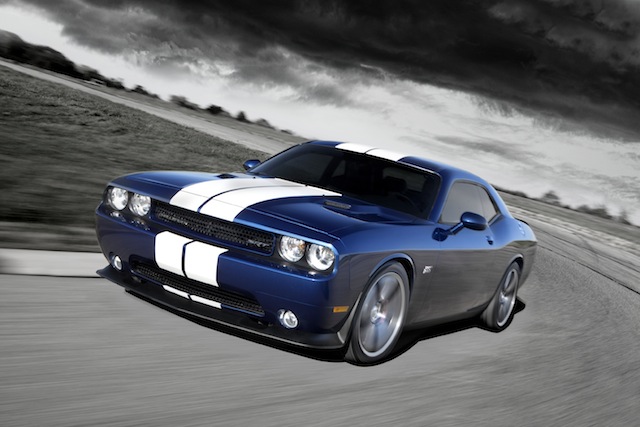When introduced, the limited-numbered ’09 SRT8 Dodge Challenger was immediately caught up in a whirlwind of media-fueled retro-madness. Available in either silver, black or HEMI Orange, the first Challenger was only opted with the 425hp 6.1L HEMI and a 5-speed automatic. That first run was purposely short to gauge the public’s appeal to the old-is-new-again coupe. Out a full-year before the oddly-angular Camaro, Dodge’s Challenger was deemed the single-truest retro muscle car Detroit had to offer.
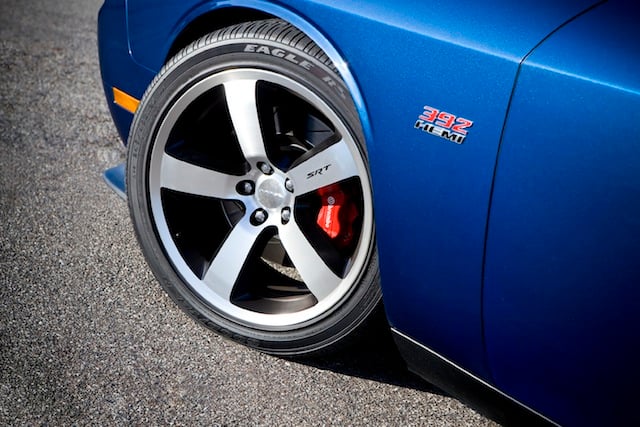 Ironically, the biggest problem with the Challenger was its complete adherence to the original E-Body. In 1970, the 426 HEMI Challenger weighed in at north of 3,800lbs., only a hair less than a similarly-equipped Charger. Larger in nearly every dimension than the slighter and more nimble Mustang as well as the new Camaro, the modern Challenger comes in just above 4,000 pounds, outweighing the prior two as well.
Ironically, the biggest problem with the Challenger was its complete adherence to the original E-Body. In 1970, the 426 HEMI Challenger weighed in at north of 3,800lbs., only a hair less than a similarly-equipped Charger. Larger in nearly every dimension than the slighter and more nimble Mustang as well as the new Camaro, the modern Challenger comes in just above 4,000 pounds, outweighing the prior two as well.
Unfortunately, what helped push the Challenger towards the front of the pack only two years ago just isn’t enough to compete today. The ever-important balance of power-to-weight still looms over the Challenger. Besides a drastic diet, Chrysler was faced with either keeping their prized pony car the same – apart from the usual yearly upgrades – and be content with it staying at the back of the pack, or making some changes.
The answer, as it has been in the past, came from Mopar, Chrysler’s racing/performance division. Offered as a special order engine only, Mopar’s 392 HEMI was a stroked and bored version of the 6.1L, being a deep-skirted cast iron block with cross-bolted mains, CNC-ported aluminum twin-plug heads, a 4140 forged steel crankshaft (with a 3.795-inch stroke), and forged pistons (at 4.055″ bore). In its crate form, the 392 made 525-horsepower and 490 ft.-lbs. torque.
Drafting this engine for production usage had its advantages (as well as a couple disadvantages). First off, if Chrysler was going to use the 392 in the production SRT8 Challengers, some changes needed to be made. The previous 6.1L was berated for its miserable fuel consumption ratings, especially as Ford’s new Coyote BOSS 302 made more horsepower with less fuel. To counter this, Dodge re-engineered its Multiple Displacement System (MDS) to work on the new 392. That way, while making more power, it’ll also be able to disengage four cylinders when cruising.
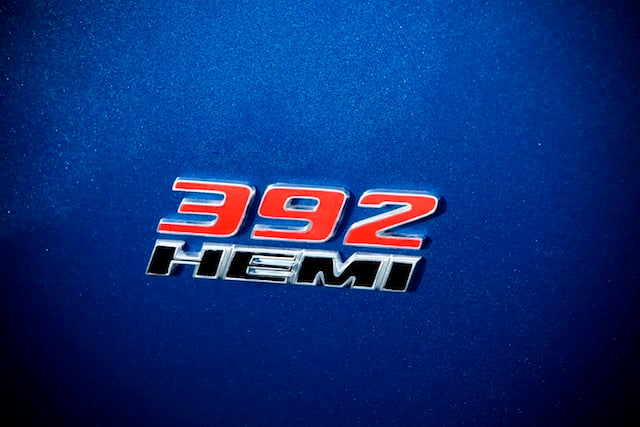 Unfortunately, incorporating the MDS meant drastically changing the 392’s tune. The ’11 Challenger – with the 392 HEMI between the shock towers – makes 470 horsepower and 470 ft. lbs. of torque, 55 less ponies than in crate form and only 45hp more than the preceding 6.1L. While this might sound a little like crying over spilled milk, the changes to the new Challenger don’t end with just an engine swap.
Unfortunately, incorporating the MDS meant drastically changing the 392’s tune. The ’11 Challenger – with the 392 HEMI between the shock towers – makes 470 horsepower and 470 ft. lbs. of torque, 55 less ponies than in crate form and only 45hp more than the preceding 6.1L. While this might sound a little like crying over spilled milk, the changes to the new Challenger don’t end with just an engine swap.
Chrysler’s new European generals decreed that the SRT line be more than just “more horsepower” insisting that handling, braking and generally improved road handling be a key ingredient in the package. Tweaks to the Challenger’s rear suspension ensure improved hookup under hard acceleration while being able to take to tight cornering, high speeds and hard braking. A new, more pronounced chin splitter, body-colored rear spoiler, freer-flowing exhaust, and tuned suspension makes the ’11 SRT8 the complete package.
Of course, there are signs that the 392 HEMI might only be a harbinger of things to come. First, the ’11 392 Challenger on display was in Pearl White and Viper Blue-stripes while the press unit’s paint was inverted. Currently, options for the 392 are limited to those two with many diehards a little unhappy with the full-length stripes. Either way, as the ’11 Challenger sat at the entrance of the Mopar booth at this year’s SEMA, a little far off sat Mopar’s replacement of the 392…the 426 HEMI.
As Mopar gave away their 392 to play on the street, they announced (very quietly, mind you) an all-aluminum Gen III 426ci. HEMI. This engine is extraordinarily superior to its predecessor. Making 540 horsepower and 530 lbs. of torque, the 426 HEMI is significantly lighter than its iron-block siblings while making far more power via a 4-inch stroker crank, 11:1 compression slugs at 4.125-inch bore. The list keeps going, but as we’re speculating that a 426 HEMI might be in the Challenger’s future here, we’ll leave you with this.



